Thermal insulation for outdoor heating pipes
In the practice of private construction, it is not so common, but there are still situations when heating communications need to be not only spread across the premises of the main house, but also stretched to other nearby buildings. These can be residential outbuildings, outbuildings, summer kitchens, utility or agricultural buildings, for example, used for keeping pets or birds. The option is not excluded when, on the contrary, the autonomous boiler house itself is located in a separate building, at some distance from the main residential building. It happens that the house is connected to the central heating main, from which pipes are stretched to it.
The laying of heating pipes between buildings is possible in two ways - underground (channel or channelless) and open. The process of installing a local heating main above the ground seems less time-consuming, and this option is used more often in conditions of independent construction. One of the main conditions for the efficiency of the system is a properly planned and well-executed thermal insulation for outdoor heating pipes. This is the question that will be considered in this publication.
It would seem nonsense - why insulate the already almost always hot pipes of the heating system? Perhaps someone can be misled by a kind of "play on words." In the case under consideration, of course, it would be more correct to conduct a conversation using the concept of "thermal insulation".
Thermal insulation work on any pipelines has two main goals:
- If pipes are used in heating or hot water supply systems, then the reduction of heat losses, maintaining the required temperature of the pumped liquid comes to the fore. The same principle is also valid for industrial or laboratory installations, where the technology requires maintaining a certain temperature of the substance transferred through the pipes.
- For pipelines of cold water supply or sewer communications, it is insulation that becomes the main factor, that is, preventing the temperature in the pipes from falling below a critical level, preventing freezing, leading to failure of the system and deformation of the pipes.
By the way, such a precaution is required for both heating mains and hot water pipes - no one is completely immune from emergencies on boiler equipment.
The very cylindrical shape of the pipes predetermines a very large area of constant heat exchange with the environment, which means significant heat losses. And they naturally grow as the diameter of the pipeline increases. The table below clearly shows how the value of heat loss changes depending on the temperature difference inside and outside the pipe (column Δt °), on the diameter of the pipes and on the thickness of the thermal insulation layer (data are given taking into account the use of insulation material with an average thermal conductivity coefficient λ = 0.04 W/m×°C).
| The thickness of the thermal insulation layer. mm | Δt.°С | Pipe outer diameter (mm) | |||||||||
|---|---|---|---|---|---|---|---|---|---|---|---|
| 15 | 20 | 25 | 32 | 40 | 50 | 65 | 80 | 100 | 150 | ||
| The amount of heat loss (per 1 linear meter of the pipeline. W). | |||||||||||
| 10 | 20 | 7.2 | 8.4 | 10 | 12 | 13.4 | 16.2 | 19 | 23 | 29 | 41 |
| 30 | 10.7 | 12.6 | 15 | 18 | 20.2 | 24.4 | 29 | 34 | 43 | 61 | |
| 40 | 14.3 | 16.8 | 20 | 24 | 26.8 | 32.5 | 38 | 45 | 57 | 81 | |
| 60 | 21.5 | 25.2 | 30 | 36 | 40.2 | 48.7 | 58 | 68 | 86 | 122 | |
| 20 | 20 | 4.6 | 5.3 | 6.1 | 7.2 | 7.9 | 9.4 | 11 | 13 | 16 | 22 |
| 30 | 6.8 | 7.9 | 9.1 | 10.8 | 11.9 | 14.2 | 16 | 19 | 24 | 33 | |
| 40 | 9.1 | 10.6 | 12.2 | 14.4 | 15.8 | 18.8 | 22 | 25 | 32 | 44 | |
| 60 | 13.6 | 15.7 | 18.2 | 21.6 | 23.9 | 28.2 | 33 | 38 | 48 | 67 | |
| 30 | 20 | 3.6 | 4.1 | 4.7 | 5.5 | 6 | 7 | 8 | 9 | 11 | 16 |
| 30 | 5.4 | 6.1 | 7.1 | 8.2 | 9 | 10.6 | 12 | 14 | 17 | 24 | |
| 40 | 7.3 | 8.31 | 9.5 | 10.9 | 12 | 14 | 16 | 19 | 23 | 31 | |
| 60 | 10.9 | 12.4 | 14.2 | 16.4 | 18 | 21 | 24 | 28 | 34 | 47 | |
| 40 | 20 | 3.1 | 3.5 | 4 | 4.6 | 4.9 | 5.8 | 7 | 8 | 9 | 12 |
| 30 | 4.7 | 5.3 | 6 | 6.8 | 7.4 | 8.6 | 10 | 11 | 14 | 19 | |
| 40 | 6.2 | 7.1 | 7.9 | 9.1 | 10 | 11.5 | 13 | 15 | 18 | 25 | |
| 60 | 9.4 | 10.6 | 12 | 13.7 | 14.9 | 17.3 | 20 | 22 | 27 | 37 | |
As the thickness of the insulation layer increases, the total heat loss decreases. However, please note that even a fairly thick layer of 40 mm does not completely eliminate heat loss. There is only one conclusion - it is necessary to strive to use insulating materials with the lowest possible coefficient of thermal conductivity - this is one of the main requirements for thermal insulation of pipelines.
Sometimes a pipe heating system is also required!
When laying water or sewer communications, it happens that, due to the peculiarities of the local climate or specific installation conditions, thermal insulation alone is clearly not enough. We have to resort to forced installation of heating cables - this topic is discussed in more detail in a special publication of our portal.
- The material that is used for thermal insulation of pipes, if possible, should have hydrophobic qualities. There will be little current from a heater soaked with water - it will not prevent heat loss either, and it will soon collapse under the influence of negative temperatures.
- The thermal insulation structure must have reliable external protection. Firstly, it needs protection from atmospheric moisture, especially if a heater is used that can actively absorb water. Secondly, materials should be protected from exposure to the ultraviolet spectrum of sunlight, which is detrimental to them. Thirdly, one should not forget about the wind load that can violate the integrity of thermal insulation. And, fourthly, there remains the factor of external mechanical impact, unintentional, including from animals, or due to banal manifestations of vandalism.
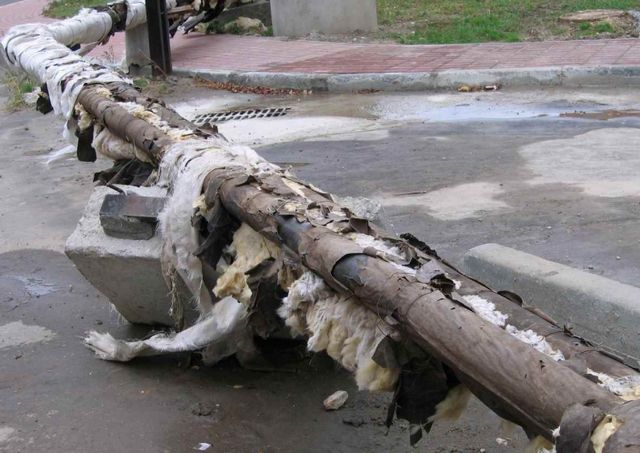
In addition, for any owner of a private house, for sure, the moments of the aesthetic appearance of the laid heating main are also not indifferent.
- Any thermal insulation material used on heating mains must have a range of operating temperatures corresponding to the actual conditions of use.
- An important requirement for the insulation material and its outer lining is the durability of use. No one wants to return to the problems of thermal insulation of pipes even once every few years.
- From a practical point of view, one of the main requirements is the ease of installation of thermal insulation, and in any position and in any complex area. Fortunately, in this regard, manufacturers do not get tired of pleasing user-friendly developments.
- An important requirement for thermal insulation is that its materials must themselves be chemically inert and not enter into any reactions with the pipe surface. Such compatibility is the key to the duration of trouble-free operation.
The issue of cost is also very important. But in this regard, the price range for specialized pipe insulation is very large.
What materials are used to insulate aboveground heating mains
The choice of thermal insulation materials for heating pipes for their external laying is quite large. They are of a roll type or in the form of mats, they can be given a cylindrical or other figured shape convenient for installation, there are heaters that are applied in liquid form and acquire their properties only after solidification.
Insulation with polyethylene foam
Foamed polyethylene is rightly referred to as a very effective thermal insulator. And more importantly, the cost of this material is one of the lowest.
The coefficient of thermal conductivity of foamed polyethylene is usually in the region of 0.035 W / m × ° C - this is a very good indicator. The smallest gas-filled bubbles isolated from each other create an elastic structure, and with such material, if its rolled version is purchased, it is very convenient to work on pipe sections with complex configurations.

Such a structure becomes a reliable barrier to moisture - with proper installation, neither water nor water vapor can penetrate through it to the pipe walls.
The density of polyethylene foam is low (about 30 - 35 kg / m³), and thermal insulation does not make the pipes heavier.
The material, with some assumption, can be categorized as low hazard in terms of flammability - it usually belongs to class G-2, that is, it is very difficult to ignite, and without an external flame it quickly fades. Moreover, combustion products, unlike many other thermal insulators, do not pose any serious toxic hazard to humans.
Rolled foamed polyethylene for insulation of external heating mains will be both inconvenient and unprofitable - you will have to wind several layers in order to achieve the required thermal insulation thickness. It is much more convenient to use material in the form of sleeves (cylinders), in which an internal channel is provided that corresponds to the diameter of the insulated pipe. For putting on pipes, usually an incision is made along the length of the cylinder on the wall, which after installation can be sealed with reliable adhesive tape.

Putting insulation on the pipe is not difficult
A more effective type of polyethylene foam is penofol, which has a foil layer on one side. This shiny coating becomes a kind of thermal reflector, which significantly increases the insulating qualities of the material. In addition, it is an additional barrier against moisture penetration.
Penofol can also be of a roll type or in the form of profiled cylindrical elements - especially for thermal insulation of pipes for various purposes.

And all foamed polyethylene for thermal insulation of heating mains is used infrequently. It is more suitable for other communications. The reason for this is the rather low temperature range of operation. So. if you look at the physical characteristics, then the upper limit balances somewhere on the verge of 75 ÷ 85 degrees - higher, violations of the structure and the appearance of deformations are possible. For autonomous heating, most often, such a temperature is enough, however, on the verge, and for central heating, thermal stability is clearly not enough.
Expanded polystyrene insulation elements
The well-known expanded polystyrene (in everyday life it is often called polystyrene) is very widely used for a variety of types of thermal insulation work. Pipe insulation is no exception - for this, special parts are made of foam plastic.
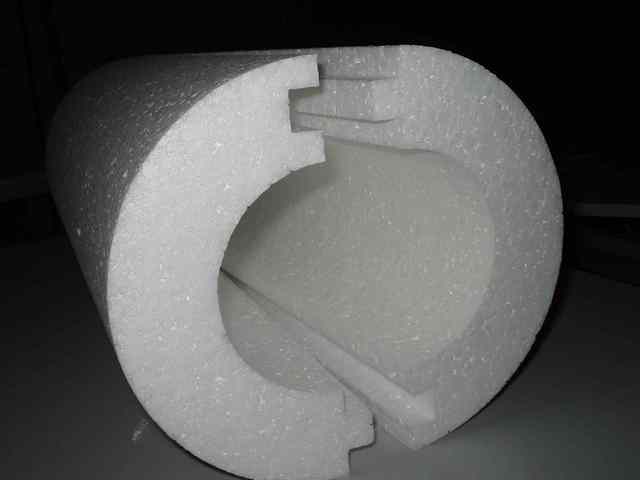
Usually these are semi-cylinders (for pipes of large diameters there may be segments of a third of the circumference, 120 ° each), which are equipped with a tongue-and-groove lock for assembly into a single structure. This configuration allows you to completely, over the entire surface of the pipe, provide reliable thermal insulation, without the remaining "cold bridges".
In everyday speech, such details are called "shells" - for their clear resemblance to it. Many types of it are produced, for different outer diameters of insulated pipes and different thicknesses of the thermal insulation layer. Usually the length of the parts is 1000 or 2000 mm.
For the manufacture of polystyrene foam type PSB-S of various grades is used - from PSB-S-15 to PSB-S-35. The main parameters of this material are shown in the table below:
| Estimated material parameters | Styrofoam brand | ||||
|---|---|---|---|---|---|
| PSB-S-15U | PSB-S-15 | PSB-S-25 | PSB-S-35 | PSB-S-50 | |
| Density (kg/m³) | to 10 | up to 15 | 15.1 ÷ 25 | 25.1 ÷ 35 | 35.1 ÷ 50 |
| Compressive strength at 10% linear deformation (MPa, not less) | 0.05 | 0.06 | 0.08 | 0.16 | 0.2 |
| Bending strength (MPa, not less than) | 0.08 | 0.12 | 0.17 | 0.36 | 0.35 |
| Dry thermal conductivity at 25°C (W/(m×°K)) | 0,043 | 0,042 | 0,039 | 0,037 | 0,036 |
| Water absorption in 24 hours (% by volume, no more) | 3 | 2 | 2 | 2 | 2 |
| Humidity (%, no more) | 2.4 | 2.4 | 2.4 | 2.4 | 2.4 |
The advantages of polystyrene foam as an insulating material have long been known:
- It has a low thermal conductivity.
- The low weight of the material greatly simplifies the insulation work, which does not require any special mechanisms or devices.
- The material is biologically inert - it will not be a breeding ground for the formation of mold or fungus.
- Moisture absorption is negligible.
- The material is easy to cut, fit to the desired size.
- Polyfoam is chemically inert, absolutely safe for pipe walls, no matter what material they are made of.
- One of the key advantages - polystyrene is one of the most inexpensive heaters.
However, it also has many disadvantages:
- First of all, it is a low level of fire safety. The material cannot be called non-combustible and does not spread flame. That is why when using it for warming ground pipelines, fire breaks must be left.
- The material does not have elasticity, and it is convenient to use it only on straight sections of the pipe. True, you can find special curly details.
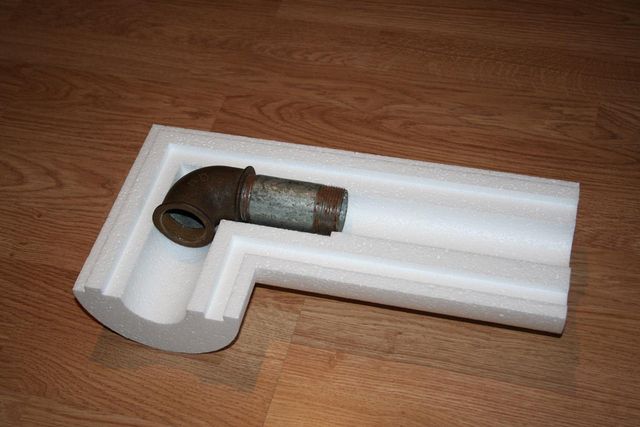
- Polyfoam does not belong to durable materials - it is easily destroyed under external influence. Ultraviolet radiation also has a negative effect on it. In a word, the above-ground sections of the pipe, insulated with a polystyrene shell, will definitely require additional protection in the form of a metal casing.
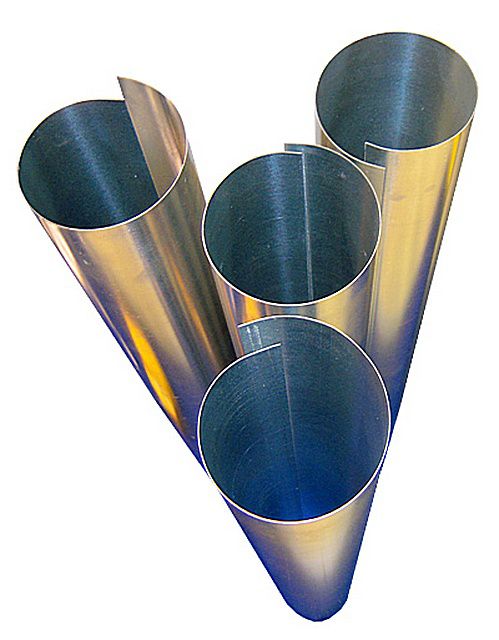
Usually, in stores that sell foam shells, they also offer galvanized sheets, cut into the desired size, corresponding to the diameter of the insulation. An aluminum shell can also be used, although it is certainly much more expensive. Sheets can be fixed with self-tapping screws or clamps - the resulting casing will simultaneously create anti-vandal, anti-wind, waterproofing protection and a barrier from sunlight.
- And yet even this is not the main thing. The upper limit of normal temperatures for operation is only around 75 ° C, after which linear and spatial deformation of parts can begin. Like it or not, this value may not be enough for heating. Perhaps it makes sense to look for a more reliable option.
Insulation of pipes with mineral wool or products based on it
The most "ancient" method of thermal insulation of external pipelines is with the use of mineral wool. By the way, it is also the most budgetary, if it is not possible to purchase a foam shell.

For thermal insulation of pipelines, various types of mineral wool are used - glass wool, stone (basalt) and slag. Slag wool is the least preferred: firstly, it most actively absorbs moisture, and secondly, its residual acidity can be very destructive to steel pipes. Even the cheapness of this cotton wool does not at all justify the risks of its use.
But mineral wool based on basalt or glass fibers is fully suitable. It has good indicators of thermal resistance to heat transfer, high chemical resistance, the material is elastic, and it is easy to lay it even on complex sections of pipelines. Another advantage - you can be, in principle, completely calm in terms of fire safety. It is almost impossible to heat up mineral wool to the degree of ignition in the conditions of an external heating main. Even exposure to an open flame will not cause the spread of fire. That is why mineral wool is used to fill fire gaps when using other pipe insulation.
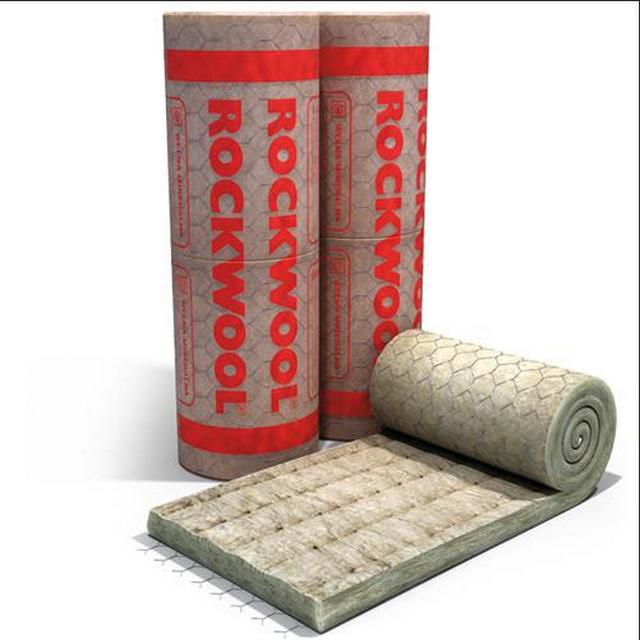
The main disadvantage of mineral wool is its high water absorption (basalt is less susceptible to this “ailment”). This means that any pipeline will require mandatory protection from moisture. In addition, the structure of wool is not resistant to mechanical stress, it is easily destroyed, and it should be protected with a strong casing.
Usually, a strong polyethylene film is used, which is securely wrapped with a layer of insulation, with a mandatory overlap of strips by 400 ÷ 500 mm, and then all this is covered with metal sheets from above - exactly by analogy with a polystyrene shell. Roofing material can also be used as a waterproofing - in this case, 100 ÷ 150 mm of overlap of one strip on another will be enough.
The existing GOSTs determine the thickness of protective metal coatings for open sections of pipelines for any type of thermal insulation materials used:
| Cover material | The minimum thickness of the metal, with the outer diameter of the insulation | ||
|---|---|---|---|
| 350 or less | Over 350 and up to 600 | Over 600 and up to 1600 | |
| Stainless steel strips and sheets | 0.5 | 0.5 | 0.8 |
| Sheet steel, galvanized or color coated | 0.5 | 0.8 | 0.8 |
| Sheets of aluminum or aluminum alloys | 0.3 | 0.5 | 0.8 |
| Tapes made of aluminum or aluminum alloys | 0.25 | - | - |
Thus, despite the seemingly inexpensive price of the insulation itself, its full installation will require considerable additional costs.
Mineral wool for pipeline insulation can also act in a different capacity - it serves as a material for the manufacture of finished thermal insulation parts, by analogy with polyethylene foam cylinders. Moreover, such products are produced both for straight sections of pipelines, and for turns, tees, etc.
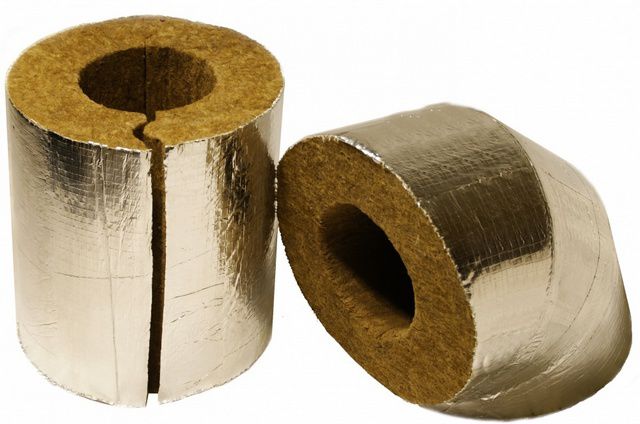
Typically, such insulating parts are made of the most dense - basalt mineral wool, have an external foil coating, which immediately removes the problem of waterproofing and increases the efficiency of insulation. But you still won’t be able to get away from the outer casing - a thin layer of foil will not protect against accidental or intentional mechanical impact.
Warming of the heating main with polyurethane foam
One of the most effective and safest modern insulation materials in operation is polyurethane foam. He has a lot of various advantages, so the material is used on almost any structure that requires reliable insulation.
What are the features of polyurethane foam insulation?
Polyurethane foam for insulation of pipelines can be used in various forms.
- PPU-shell is widely used, usually having an external foil coating. It can be collapsible, consisting of half-cylinders with tongue-and-groove locks, or, for pipes of small diameter, with a cut along the length and a special valve with a self-adhesive back surface, which greatly simplifies the installation of insulation.
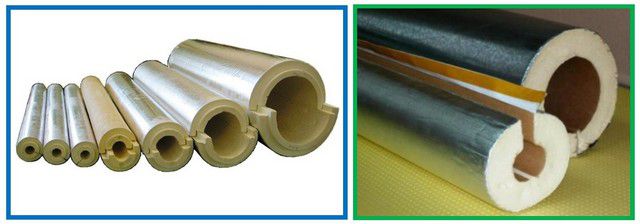
- Another way to insulate a heating main with polyurethane foam is to spray it in liquid form using special equipment. The resulting foam layer after complete hardening becomes an excellent insulation. This technology is especially convenient at complex interchanges, pipe bends, in nodes with shut-off and control valves, etc.
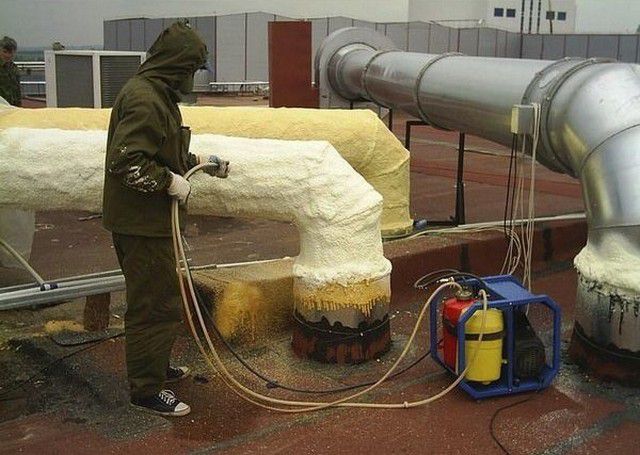
The advantage of this technology is also that due to the excellent adhesion of polyurethane foam spraying to the pipe surface, excellent waterproofing and corrosion protection are created. True, polyurethane foam itself also requires mandatory protection - from ultraviolet rays, so again it will not be possible to do without a casing.
- Well, if you need to lay a sufficiently long heating main, then probably the best choice would be to use pre-insulated (pre-insulated) pipes.
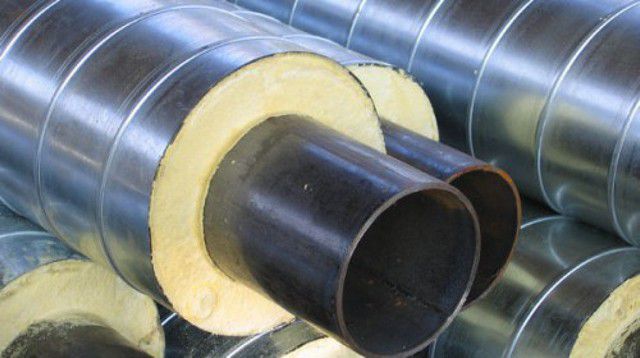
In fact, such pipes are a multilayer structure assembled at the factory:
- The inner layer is, in fact, the steel pipe itself of the required diameter, through which the coolant is pumped.
- External coating - protective. It can be polymeric (for laying a heating main in the thickness of the soil) or galvanized metal - what is required for open sections of the pipeline.
- Between the pipe and the casing, a monolithic, seamless layer of polyurethane foam is poured, which performs the function of effective thermal insulation.
An assembly section was left at both ends of the pipe for welding during the assembly of the heating main. Its length is calculated in such a way that the heat flux from the welding arc will not damage the polyurethane foam layer.
After the installation, the remaining non-insulated areas are primed, covered with a polyurethane foam shell, and then with metal belts, comparing the coating with the common outer casing of the pipe. Often, it is in such areas that fire breaks are organized - they are densely filled with mineral wool, then they are waterproofed with roofing material and still covered with a steel or aluminum casing from above.
The standards establish a certain assortment of such sandwich pipes, that is, it is possible to purchase products of the desired nominal diameter with optimal (normal or reinforced) thermal insulation.
| Steel pipe outer diameter and minimum wall thickness (mm) | Dimensions of galvanized sheet steel sheath | Estimated thickness of the thermal insulation layer of polyurethane foam (mm) | |
|---|---|---|---|
| nominal outside diameter (mm) | minimum thickness of steel sheet (mm) | ||
| 32×3.0 | 100; 125; 140 | 0.55 | 46,0; 53,5 |
| 38×3.0 | 125; 140 | 0.55 | 43,0; 50,5 |
| 45×3.0 | 125; 140 | 0.55 | 39,5; 47,0 |
| 57×3.0 | 140 | 0.55 | 40.9 |
| 76×3.0 | 160 | 0.55 | 41.4 |
| 89×4.0 | 180 | 0.6 | 44.9 |
| 108×4.0 | 200 | 0.6 | 45.4 |
| 133×4.0 | 225 | 0.6 | 45.4 |
| 159×4.5 | 250 | 0.7 | 44.8 |
| 219×6.0 | 315 | 0.7 | 47.3 |
| 273×7.0 | 400 | 0.8 | 62.7 |
| 325×7.0 | 450 | 0.8 | 61.7 |
Manufacturers offer such sandwich pipes not only for straight sections, but also for tees, bends, expansion joints, etc.
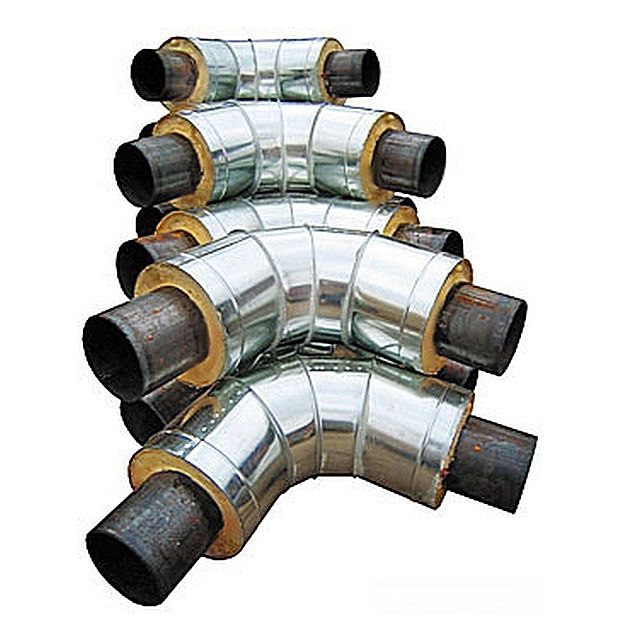
The cost of such pre-insulated pipes is quite high, but with their purchase and installation, a whole range of problems is solved at once. So these costs seem to be quite justified.
Video: production process of pre-insulated pipes
Insulation - foamed rubber
Recently, thermal insulation materials and products made of synthetic foam rubber have become very popular. This material has a number of advantages that bring it to a leading position in the issues of insulation of pipelines, including not only heating mains, but also more responsible ones - on complex technological lines, in machine, aircraft and shipbuilding:
- Foamed rubber is very elastic, but at the same time it has a large margin of tensile strength.
- The density of the material is only from 40 to 80 kg / m³.
- The low thermal conductivity provides very effective thermal insulation.
- The material does not shrink over time, completely retaining its original shape and volume.
- Foamed rubber is difficult to ignite and has the property of rapid self-extinguishing.
- The material is chemically and biologically inert; neither mold or fungus foci, nor nests of insects or rodents ever appear in it.
- The most important quality is almost absolute water and vapor impermeability. Thus, the insulation layer immediately becomes an excellent waterproofing for the pipe surface.
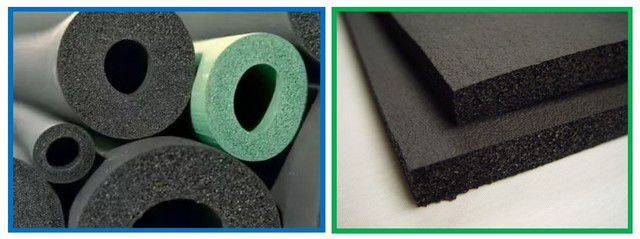
Such thermal insulation can be produced in the form of hollow tubes with an internal diameter of 6 to 160 mm and a layer thickness of insulation from 6 to 32 mm, or in the form of sheets, which are often given the function of “self-adhesive” on one side.
| The name of indicators | Values |
|---|---|
| Length of finished tubes, mm: | 1000 or 2000 |
| Colour | black or silver, depending on the type of protective coating |
| Temperature range of application: | from - 50 to + 110 °С |
| Thermal conductivity, W / (m × ° С): | λ≤0.036 at 0°C |
| λ≤0.039 at +40°C | |
| Vapor permeability coefficient: | μ≥7000 |
| Degree of fire hazard | Group G1 |
| Permissible length change: | ±1.5% |
But for outdoor heating mains, ready-made insulation elements made using the Armaflex ACE technology, with a special protective coating ArmaChek, are especially convenient.
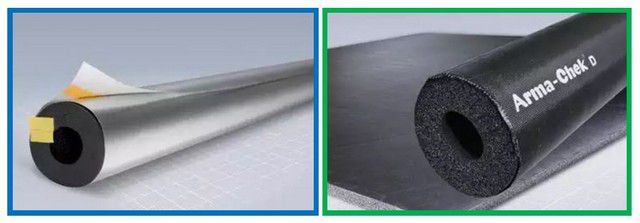
Coating "ArmaChek" can be of several types, for example:
- Arma-Chek Silver is a multi-layered PVC-based shell with a silver reflective coating. This coating provides excellent insulation protection against both mechanical stress and ultraviolet rays.
- The black "Arma-Chek D" finish has a high strength fiberglass backing that retains excellent flexibility. This is an excellent protection against all possible chemical, weather, mechanical influences, which will keep the heating pipe intact.
Typically, such products using ArmaChek technology have self-adhesive valves that hermetically “seal” the insulating cylinder on the pipe body. Figured elements are also produced, allowing installation on difficult sections of the heating main. Skillful use of such thermal insulation allows you to quickly and reliably mount it without resorting to the creation of an additional external protective casing - there is simply no need for it.
Probably the only thing that hinders the widespread use of such thermal insulation products for pipelines is the still prohibitively high price for real, "brand" products.
A new direction in insulation - heat-insulating paint
You can not miss another modern technology of insulation. And it is all the more pleasant to talk about it, since it is the development of Russian scientists. We are talking about ceramic liquid insulation, which is also known as heat-insulating paint.
This, without any doubt, is an "alien" from the field of space technology. It is in this scientific and technical branch that the issues of thermal insulation from critically low (in open space) or high (during the launch of ships and landing of descent vehicles) are especially acute.
The thermal insulation qualities of ultra-thin coatings seem simply fantastic. At the same time, such a coating becomes an excellent hydro and vapor barrier, protecting the pipe from all possible external influences. Well, the heating main itself takes on a well-groomed, pleasing look.
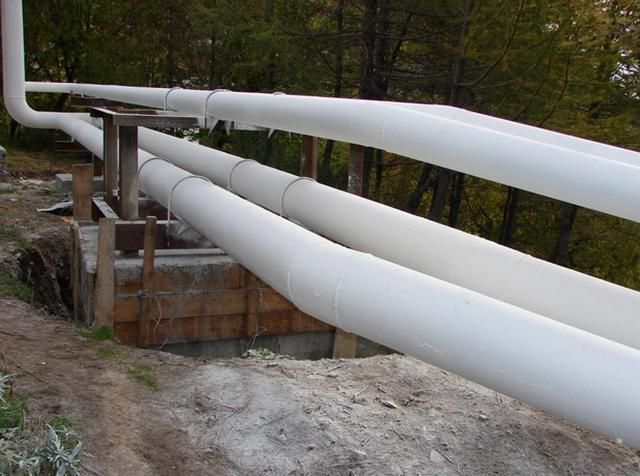
The paint itself is a suspension of microscopic, vacuum-filled silicone and ceramic capsules, suspended in a liquid state in a special composition, including acrylic, rubber and other components. After application and drying of the composition, a thin elastic film is formed on the surface of the pipe, which has outstanding thermal insulation qualities.
| Names of indicators | unit of measurement | Value |
|---|---|---|
| paint color | white (can be customized) | |
| Appearance after application and complete curing | matt, even, uniform surface | |
| Flexural elasticity of the film | mm | 1 |
| Adhesion of the coating according to the force of separation from the painted surface | ||
| - to the concrete surface | MPa | 1.28 |
| - to the brick surface | MPa | 2 |
| - to steel | MPa | 1.2 |
| Coating resistance to temperature difference from -40 °С to + 80 °С | without changes | |
| Resistance of the coating to the effects of temperature +200 °C for 1.5 hours | no yellowing, cracks, peeling or blisters | |
| Durability for concrete and metal surfaces in a moderately cold climatic region (Moscow) | years | at least 10 |
| Thermal conductivity | W/m °C | 0,0012 |
| Vapor permeability | mg/m × h × Pa | 0.03 |
| Water absorption in 24 hours | % by volume | 2 |
| Operating temperature range | °С | from - 60 to + 260 |
Such a coating does not require additional protective layers - it is strong enough to cope with all the impacts on its own.
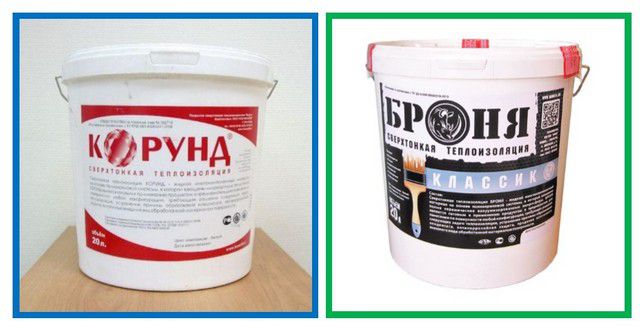
Such a liquid insulation is sold in plastic cans (buckets), like ordinary paint. There are several manufacturers, and among the domestic brands, the brands "Bronya" and "Korund" can be especially noted.

Such thermal paint can be applied by aerosol spraying or in the usual way - with a roller and brush. The number of layers depends on the operating conditions of the heating main, the climatic region, the diameter of the pipes, the average temperature of the pumped coolant.
Many experts believe that such heaters will eventually replace the usual thermal insulation materials on a mineral or organic basis.
Video: presentation of ultra-thin thermal insulation brand "Korund"
What thickness of heating mains insulation is required
Summing up the review of the materials used for thermal insulation of heating pipes, you can see the performance indicators of the most popular of them in the table - for clarity of comparison:
| Thermal insulation material or product | Average density in finished structure, kg/m3 | Thermal conductivity of thermal insulation material (W/(m×°C)) for surfaces with temperature (°C) | Operating temperature range, °C | Flammability group | |
|---|---|---|---|---|---|
| 20 and above | 19 and below | ||||
| Mineral wool pierced plates | 120 | 0,045 | 0.044 ÷ 0.035 | From - 180 to + 450 for mats, on fabric, mesh, fiberglass canvas; up to + 700 - on a metal grid | non-combustible |
| 150 | 0,05 | 0.048 ÷ 0.037 | |||
| Heat-insulating slabs of mineral wool on a synthetic binder | 65 | 0.04 | 0.039 ÷ 0.03 | From - 60 to + 400 | non-combustible |
| 95 | 0,043 | 0.042 ÷ 0.031 | |||
| 120 | 0,044 | 0.043 ÷ 0.032 | From - 180 + 400 | ||
| 180 | 0,052 | 0.051 ÷ 0.038 | |||
| Thermal insulation products made of foamed ethylene-polypropylene rubber Aeroflex | 60 | 0,034 | 0,033 | From - 55 to + 125 | Slightly combustible |
| Semi-cylinders and mineral wool cylinders | 50 | 0,04 | 0.039 ÷ 0.029 | From - 180 to + 400 | non-combustible |
| 80 | 0,044 | 0.043 ÷ 0.032 | |||
| 100 | 0,049 | 0.048 ÷ 0.036 | |||
| 150 | 0,05 | 0.049 ÷ 0.035 | |||
| 200 | 0,053 | 0.052 ÷ 0.038 | |||
| Thermal insulation cord made of mineral wool | 200 | 0,056 | 0.055 ÷ 0.04 | From - 180 to + 600 depending on the material of the mesh tube | In mesh tubes made of metal wire and glass thread - non-combustible, the rest are slightly combustible |
| Glass staple fiber mats with synthetic binder | 50 | 0,04 | 0.039 ÷ 0.029 | From - 60 to + 180 | non-combustible |
| 70 | 0,042 | 0.041 ÷ 0.03 | |||
| Mats and wool made of superfine glass fiber without binder | 70 | 0,033 | 0.032 ÷ 0.024 | From - 180 to + 400 | non-combustible |
| Mats and wool made of super-thin basalt fiber without a binder | 80 | 0,032 | 0.031 ÷ 0.024 | From - 180 to + 600 | Non-combustible |
| Perlite sand, expanded, fine | 110 | 0,052 | 0.051 ÷ 0.038 | From - 180 to + 875 | non-combustible |
| 150 | 0,055 | 0.054 ÷ 0.04 | |||
| 225 | 0,058 | 0.057 ÷ 0.042 | |||
| Thermal insulation products made of expanded polystyrene | 30 | 0,033 | 0.032 ÷ 0.024 | From - 180 to + 70 | combustible |
| 50 | 0,036 | 0.035 ÷ 0.026 | |||
| 100 | 0,041 | 0.04 ÷ 0.03 | |||
| Thermal insulation products made of polyurethane foam | 40 | 0,030 | 0.029 ÷ 0.024 | From - 180 to + 130 | combustible |
| 50 | 0,032 | 0.031 ÷ 0.025 | |||
| 70 | 0,037 | 0.036 ÷ 0.027 | |||
| Thermal insulation products made of polyethylene foam | 50 | 0,035 | 0,033 | From - 70 to + 70 | combustible |
But for sure, an inquisitive reader will ask: where is the answer to one of the main questions that arise - what should be the thickness of the insulation?
This question is quite complex, and there is no single answer to it. If you wish, you can use cumbersome calculation formulas, but they are probably understandable only to qualified heating engineers. However, not everything is so scary.
Manufacturers of finished thermal insulation products (shells, cylinders, etc.) usually lay down the required thickness, calculated for a particular region. And if mineral wool insulation is used, then you can use the data of the tables that are given in a special Code of Rules, which is designed specifically for thermal insulation of pipelines and process equipment. This document is easy to find on the web by entering a search query "SP 41-103-2000".
Here, for example, is a table from this handbook regarding the above-ground placement of the pipeline in the Central region of Russia, using mats made of glass staple fiber grade M-35, 50:
| Outer diameter pipeline, mm | Type of heating pipe | |||||
|---|---|---|---|---|---|---|
| innings | return line | innings | return line | innings | return line | |
| Average temperature mode of the coolant, °C | ||||||
| 65 | 50 | 90 | 50 | 110 | 50 | |
| Required insulation thickness, mm | ||||||
| 45 | 50 | 50 | 45 | 45 | 40 | 40 |
| 57 | 58 | 58 | 48 | 48 | 45 | 45 |
| 76 | 67 | 67 | 51 | 51 | 50 | 50 |
| 89 | 66 | 66 | 53 | 53 | 50 | 50 |
| 108 | 62 | 62 | 58 | 58 | 55 | 55 |
| 133 | 68 | 68 | 65 | 65 | 61 | 61 |
| 159 | 74 | 74 | 64 | 64 | 68 | 68 |
| 219 | 78 | 78 | 76 | 76 | 82 | 82 |
| 273 | 82 | 82 | 84 | 84 | 92 | 92 |
| 325 | 80 | 80 | 87 | 87 | 93 | 93 |
Similarly, you can find the desired parameters for other materials. By the way, the same Code of Rules does not recommend significantly exceeding the specified thickness. Moreover, the maximum values of the insulation layer for pipelines are also determined:
| Outer diameter of the pipeline, mm | Maximum thickness of the thermal insulation layer, mm | |
|---|---|---|
| temperature 19 ° C and below | temperature 20 ° C or more | |
| 18 | 80 | 80 |
| 25 | 120 | 120 |
| 32 | 140 | 140 |
| 45 | 140 | 140 |
| 57 | 150 | 150 |
| 76 | 160 | 160 |
| 89 | 180 | 170 |
| 108 | 180 | 180 |
| 133 | 200 | 200 |
| 159 | 220 | 220 |
| 219 | 230 | 230 |
| 273 | 240 | 230 |
| 325 | 240 | 240 |
However, do not forget about one important nuance. The fact is that any insulation with a fibrous structure inevitably shrinks over time. And this means that after a certain period of time, its thickness may become insufficient for reliable thermal insulation of the heating main. There is only one way out - even when installing insulation, immediately take into account this amendment for shrinkage.
To calculate, you can apply the following formula:
H = ((D + h) : (D + 2 h)) × h× Kc
H- the thickness of the mineral wool layer, taking into account the correction for compaction.
D- outer diameter of the pipe to be insulated;
h- the required thickness of insulation according to the table of the Code of Practice.
Ks- coefficient of shrinkage (compaction) of fibrous insulation. It is a calculated constant whose value can be taken from the table below:
| Thermal insulation materials and products | Compaction factor Kc. |
|---|---|
| Mineral wool mats | 1.2 |
| Heat-insulating mats "TEHMAT" | 1.35 ÷ 1.2 |
| Mats and canvases made of super-thin basalt fiber when laying on pipelines and equipment with nominal diameter, mm: | |
| Doo | 3 |
| 1,5 | |
| DN ≥ 800 at an average density of 23 kg/m3 | 2 |
| ̶ the same, with an average density of 50-60 kg/m3 | 1,5 |
| Mats made of glass staple fiber on a synthetic binder brand: | |
| M-45, 35, 25 | 1.6 |
| M-15 | 2.6 |
| Glass staple fiber mats "URSA" brand: | |
| M-11: | |
| ̶ for pipes with DN up to 40 mm | 4,0 |
| ̶ for pipes with DN from 50 mm and above | 3,6 |
| M-15, M-17 | 2.6 |
| M-25: | |
| ̶ for pipes with DN up to 100 mm | 1,8 |
| ̶ for pipes with DN from 100 to 250 mm | 1,6 |
| ̶ for pipes with DN over 250 mm | 1,5 |
| Mineral wool boards on a synthetic binder brand: | |
| 35, 50 | 1.5 |
| 75 | 1.2 |
| 100 | 1.10 |
| 125 | 1.05 |
| Glass staple fiber board grades: | |
| P-30 | 1.1 |
| P-15, P-17 and P-20 | 1.2 |
To help the interested reader, a special calculator is placed below, in which the indicated ratio is already included. It is worth entering the requested parameters - and immediately get the required thickness of mineral wool insulation, taking into account the amendment.
